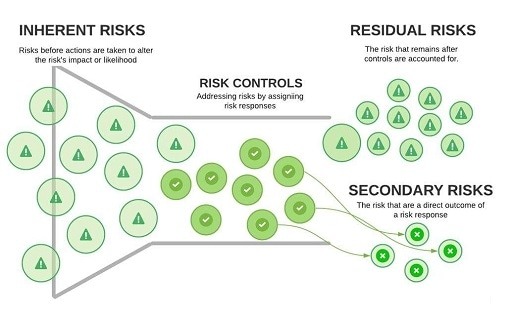JavaScript Security or JavaScript is a type of programming language that is primarily used by web browsers to form a dynamic and interactive experience for the user. Most of the functions and even applications that make the Internet crucial to modern life are coded in some type of JavaScript.
You know, for numerous years, Javascript just functioned on a restricted number of browsers. Microsoft’s Internet Explorer, the largest browser base, did not support Javascript until much later.
Rather, Microsoft created its type of proprietary client-side script known as JScript. In the initial days of web development, programmers who looked forward to creating dynamic websites were mostly forced to choose one browser family over that of the other. This was less than perfect because it made the web less universally accessible.

Furthermore, Javascript did not turn out to be standardized and hugely adopted until 1999. Even after standardization, browser compatibility remained an issue for over a decade.
However, this script is widely used in the present time, and it has found its place in almost every type of business. Talking about Javascript security, it is getting improved too with the passing of time.
You can also read: Site Optimization Tips for eCommerce in 2024
Working of Javascript
JavaScript is what is called a client-side script. Most web applications, like that of a search engine, act because of an interaction between the user’s device (e.g., phone, computer, or tablet) and that of the remote server.
The software that is there on the remote server sends information to that of the client (i.e., the machine of the user), and the software on the client side simply reads the data and renders a web page on the computer or mobile screen.
A client-side script is a kind of programming language that works its tasks completely on the client’s machine and does not require interaction with the server to act.
For instance, in case you have a web page loaded on your computer and your Internet service provider simply goes down, you are still in a position to interact with the web pages that are already loaded on your browser.
You are not, however, in a position to navigate to a fresh type of web page or access any sort of data located remotely. Some of the dynamic and effective website enhancements performed by Javascript are like:
- Autocomplete
- Loading fresh content or data onto the page in the absence of reloading the page
- Playing audio as well as video
- Rollover effects and even dropdown menus
- Animating page elements like fading, resizing, or even relocating
- Validating input from that Web forms
- Mending browser compatibility issues
Though JavaScript is a kind of client-side language, some of its most powerful and effective features involve asynchronous interaction with that of a remote server. Asynchronous just means that Javascript is in a position to communicate with the server in the background in the absence of interrupting the user interaction taking place in the overall foreground.
Take any search engine, for example. Today, search engines nearly all have an autocomplete function. The user starts typing a word into the search box, and a list of possible search terms or even phrases appears below.
The experience is unified. Suggested search terms come up without even reloading the page. The point is simple: in the background, Javascript actually reads the letters as the user types, sends such types of letters to a remote server, and even the server sends suggestions back.
The thing is, the software on the server side simply analyzes the words and runs algorithms to forestall the user’s search term. Such programs are fiendishly large and complex. The Javascript on the client’s machine is as general and small as possible so as not to simply slow down the interaction of the user.
The communication between Javascript and the server-side program is quite restricted by the user’s bandwidth. This is the reason why the developers prioritize efficiency in Javascript functions and make the sum of data communicated between the programs as tiny as possible.
The security of JavaScript
Like nearly any type of programming language, Javascript is not really in the absence of its share of potential security exposures. Exploiting Javascript susceptibilities can manipulate data, redirect sessions, and even modify and steal data, and a lot more.
Although Javascript is characteristically thought of as a client-side app, Javascript safety issues can create problems in server-side environments too. The best guard against common Javascript safety vulnerabilities is to simply be aware of them and implement complete controls to lessen the exposure.
You can also read: 5 UX/UI Design Trends That We Will See In 2024
What is this JavaScript safety?
JavaScript safety or security is related to investigating, averting, protecting, and resolving safety issues in applications where JavaScript is used.
Most common JavaScript susceptibilities include cross-site scripting (XSS), malicious code, man-in-the-middle attacks, and even exploiting JavaScript security vulnerabilities in the source code of any specific web application.
Javascript itself is a fundamental type of technology for building web applications and is also extremely popular for building server-side, desktop, and even mobile apps.
Its widespread popularity, however, even makes it a prime target for attackers and hackers looking to board it through various attack paths. Because Javascript is used mostly in the frontend, it makes proper sense to focus first on Javascript safety issues in browsers.
Software vendors and sellers have also recognized such JavaScript security issues, responding with JavaScript security scanner software and a diversity of JavaScript safety testing tools that make applications more protected and greatly reduce JavaScript safety or security risks.
Remember that the most general Javascript attack vectors include executing the malicious script, stealing a user’s established session data or even data from the browser’s local storage, tricking the overall users into carrying out unintended actions, and exploiting vulnerabilities in the source code of web applications.
Well, this is not at all an exhaustive list, and there are many other risks too that you may come across if you explore.
Conclusion
To sum up, since you know much about JavaScript and its usage and also potential threats, make sure that you discuss with experts like Appsealing and implement proper safety solutions.
Would you like to read more about JavaScript Security-related articles? If so, we invite you to take a look at our other tech topics before you leave!










